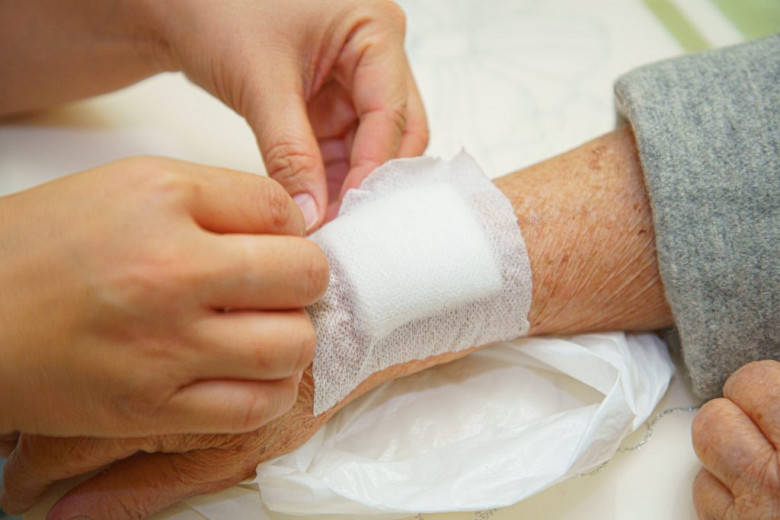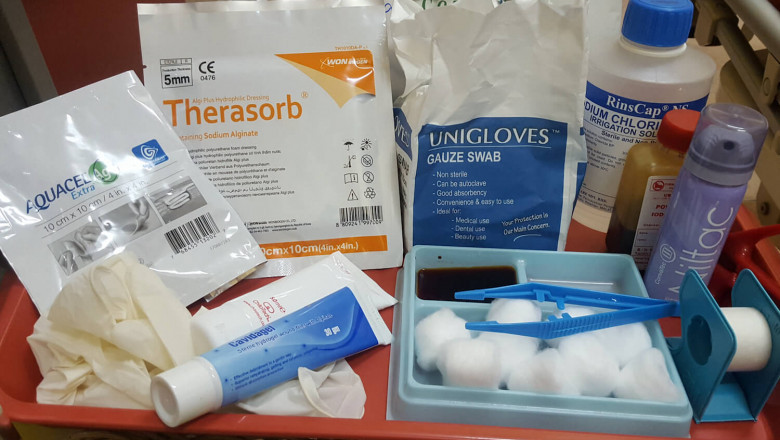visualizzazioni
Advanced Wound Dressing Market: Innovations and Impact of Nanotechnology

Introduction
The Advanced Wound Dressing Market has witnessed remarkable growth in recent years, driven by increasing cases of chronic wounds, burns, and surgical wounds. Traditional wound care methods are being replaced by sophisticated solutions that promote faster and more effective healing. One of the groundbreaking advancements revolutionizing this sector is nanotechnology, which offers enhanced antibacterial properties and innovative drug delivery systems for wound dressings. This article explores the role of nanofibers, nanoparticles, and other nanotechnology-based innovations in the advanced wound dressing market.
Understanding Advanced Wound Dressings
Advanced wound dressings are designed to provide a moist wound environment, which is essential for optimal healing. Unlike traditional wound dressings such as gauze, advanced dressings are created using bioactive materials that actively support wound healing. They are categorized into several types, including:
-
Foam Dressings: Ideal for wounds with moderate to heavy exudate.
-
Hydrocolloids: Provide a moist environment and are suitable for lightly exuding wounds.
-
Hydrogels: Effective for dry or necrotic wounds.
-
Alginate Dressings: Best for wounds with significant exudate.
-
Collagen Dressings: Stimulate tissue growth and promote healing.
Nanotechnology is a game-changing innovation that further enhances the properties and efficacy of these dressings.
Nanotechnology in Advanced Wound Dressings: Enhancing Healing Efficacy
Nanotechnology involves manipulating materials at the nanoscale to achieve unique properties and functionalities. In wound care, nanotechnology-based solutions offer improved wound healing outcomes by enhancing the structural and functional properties of dressings.
Role of Nanofibers in Improving Antibacterial Properties
Nanofibers are ultrafine fibers with diameters ranging from nanometers to micrometers. Their high surface area-to-volume ratio makes them highly effective in wound dressings.
-
Antibacterial Properties: Nanofiber-based wound dressings can be infused with antimicrobial agents to combat bacterial infections. The nanoscale structure provides better contact with the wound surface, enhancing the effectiveness of the antibacterial agents.
-
Moisture Retention: Nanofibers can create a breathable yet moisture-retaining barrier that promotes faster wound healing.
-
Biocompatibility: Nanofibers made from biocompatible materials such as chitosan and collagen support natural tissue regeneration.
Nanoparticles for Enhanced Healing
Nanoparticles are another critical component of nanotechnology-based wound dressings. These tiny particles can be engineered to provide targeted therapeutic effects.
-
Antibacterial Agents: Silver nanoparticles are widely used for their potent antibacterial properties. They help reduce the risk of infection and promote a sterile wound environment.
-
Antioxidant Properties: Nanoparticles loaded with antioxidants can mitigate oxidative stress in chronic wounds, accelerating the healing process.
-
Controlled Drug Release: Nanoparticles can encapsulate drugs and release them in a controlled manner, ensuring sustained therapeutic effects.
Innovations in Drug Delivery Through Nanotechnology-Based Wound Dressings
One of the most significant advancements in advanced wound dressings is the integration of nanotechnology for innovative drug delivery systems.
Targeted Drug Delivery
Nanotechnology allows for the precise delivery of drugs directly to the wound site. Nanoparticles can be engineered to respond to specific stimuli such as pH changes or temperature variations, releasing therapeutic agents only when needed.
Sustained Release Mechanisms
Nanoparticle-based wound dressings can provide sustained drug release over an extended period. This reduces the need for frequent dressing changes and ensures a consistent therapeutic effect.
Combination Therapies
Nanotechnology enables the incorporation of multiple therapeutic agents into a single wound dressing. For example, a nanofiber dressing may contain both antibacterial nanoparticles and growth factors to promote tissue regeneration.
Smart Wound Dressings
Emerging innovations include smart wound dressings that can monitor wound conditions and deliver therapeutic agents in response to real-time changes. These dressings leverage nanotechnology to achieve enhanced functionality and personalized wound care.
Market Trends and Growth Drivers
The advanced wound dressing market is expected to grow significantly due to several factors:
-
Increasing Prevalence of Chronic Wounds: Conditions such as diabetes and obesity contribute to a higher incidence of chronic wounds.
-
Rising Geriatric Population: Aging populations are more susceptible to wounds that require advanced care.
-
Technological Advancements: Innovations in nanotechnology and biomaterials are driving market growth.
-
Government Initiatives: Support for research and development in wound care technologies is boosting the adoption of advanced dressings.
Challenges and Future Outlook
Despite the promising advancements, the advanced wound dressing market faces several challenges:
-
High Costs: Nanotechnology-based wound dressings are often more expensive than traditional options.
-
Regulatory Hurdles: Obtaining regulatory approval for new nanotechnology-based products can be time-consuming and complex.
-
Limited Awareness: Healthcare providers and patients may be unaware of the benefits of advanced wound dressings.
Looking ahead, the market is poised for continued growth as research and development efforts focus on overcoming these challenges. The integration of nanotechnology will play a pivotal role in shaping the future of wound care.
Conclusion
Nanotechnology is transforming the advanced wound dressing market by enhancing healing efficacy and enabling innovative drug delivery systems. The use of nanofibers and nanoparticles has improved antibacterial properties and provided new avenues for targeted and sustained drug release. As technological advancements continue, nanotechnology-based wound dressings are set to become a cornerstone of modern wound care, offering superior outcomes for patients and healthcare providers alike.






















Comments
0 comment